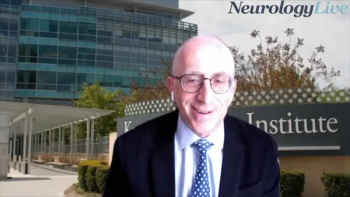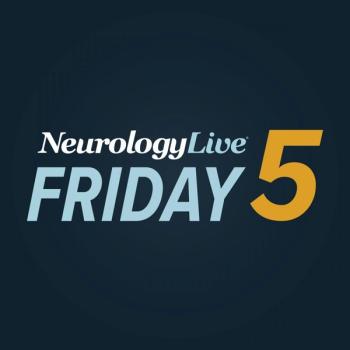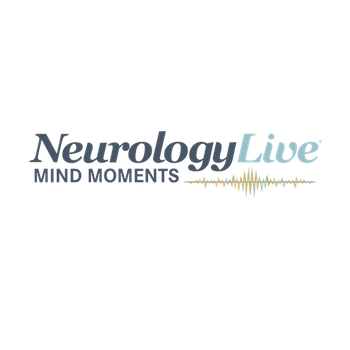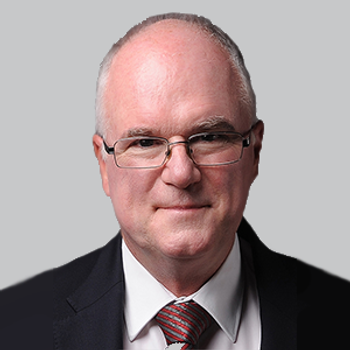
Here's some of what is coming soon to NeurologyLive® this week.

A doubling of mean seizure intervals was demonstrated from period 1 to period 4 for the 76-patient cohort who received the Neurelis nasal spray treatment across 360 days.

The director of medical outpatient services at the Kennedy Krieger Institute discussed how the clinical community has approached children who fail to reach developmental milestones in part because of poor home lifestyle. [WATCH TIME: 3 minutes]

Test your neurology knowledge with NeurologyLive®'s weekly quiz series, featuring questions on a variety of clinical and historical neurology topics. This week's topic is headache and migraine.

The associate director of the Sleep Center at Children’s Hospital of Philadelphia detailed the similarities and differences in how sleep disorders are viewed between children and adults. [WATCH TIME: 4 minutes]

Jay Alberts, PhD, the Edward F. and Barbara A. Bell Endowed Chair at Cleveland Clinic, provided commentary on an innovative approach using virtual reality to detect early signs of Parkinson disease.

Neurology News Network for the week ending September 10, 2022. [WATCH TIME: 4 minutes]

Take 5 minutes to catch up on NeurologyLive®'s highlights from the week ending September 9, 2022.

The investigational Ionis and AstraZeneca treatment showed clinically meaningful changes in serum TTR concentration and modified Neuropathy Impairment Score +7 measures. The companies intend to file an NDA based on the findings of the NEURO-TTRansform study.

Barry J. Byrne, MD, PhD, the associate chair of pediatrics and director of the Powell Gene Therapy Center at the University of Florida; and the chief medical advisor to the Muscular Dystrophy Association, offered his perspective on the upcoming FDA decision on AT-GAA (Amicus Pharma).

Mind Moments®, a podcast from NeurologyLive®, brings you an exclusive interview with Christopher Elder, MD. [LISTEN TIME: 32 minutes]

Similarly, the prospective observational data of active duty military individuals showed that comorbid obstructive sleep apnea and insomnia resulted in worsened symptoms and sleep-related impairments.

The founder and executive director of the Sumaira Foundation offered her perspective on the patient journey in NMOSD and the vital need to increase awareness [WATCH TIME: 9 minutes]

The assistant professor of clinical pediatrics at Indiana University School of Medicine, and the chair of the AASM’s Artificial Intelligence in Sleep Medicine Committee, discussed the potential of AI to progress care paradigms in insomnia. [WATCH TIME: 2 minutes]

Using patients with post–COVID-19 neurological symptoms, 90% of the cohort fulfilled the criteria for chronic fatigue syndrome, as expressed by the SOFA scale.

If approved, the oral fixed-dose coformulation of sodium phenylbutyrate-taurursodiol will become the third medication to receive an FDA greenlight for ALS.

In a recently submitted medical device report, Philips reported 14 serious injuries and 0 deaths related to the use of the recalled masks.

The associate director of the Sleep Center at Children’s Hospital of Philadelphia provided context on the ever-expanding world of technology and the harmful effects it can have on children’s sleep. [WATCH TIME: 3 minutes]

The substudy of the COVER-MS Project includes 300 patients with multiple sclerosis and will harness Quest Diagnostic’s national network of more than 2100 patient centers to provide periodic blood samples of immune responses to COVID-19 vaccines.

The assistant professor of clinical pediatrics at Indiana University School of Medicine, and the chair of the AASM’s Artificial Intelligence in Sleep Medicine Committee, spoke to the new pilot program to certify sleep stage scoring AI software. [WATCH TIME: 3 minutes]

The molecular biologist at the Cleveland Clinic Lerner Research Institute provided commentary on how certain activity markers may help understand immune response differences in Alzheimer disease and related dementias.

Despite efforts to reduce perioperative complications rates by vetting of surgeons and sites, and refining patient selection, the findings nonetheless demonstrated no clinical benefit from the addition of stenting to medical therapy.

The hold was originally placed on part B of the phase 2 MOMENTUM trial in Duchenne muscular dystrophy following a June 2022 report of hypomagnesemia after treatment with high-dose SRP-5051. Going forward, Sarepta will adjust its global trial protocol.

Episode 25 of the AUPN Leadership Minute features Tracey A. Milligan, MD, of New York Medical College; and Mill Etienne, MD, of New York Medical College. [WATCH TIME: 8 minutes]

Olwen C. Murphy, MBBCh, and Matthew R. Vogt, MD, PhD, discussed the current clinical understanding of AFM and the need to recognize this condition amid the “peak” months of infection: August, September, and October.

The clinical assistant professor of neurology in the Comprehensive Epilepsy Center at NYU Langone Health shared an overview of the various neurostimulation devices that have made their way into the clinical care of seizure disorders. [WATCH TIME: 4 minutes]

Stringent governmental measures predicted lower global scores on Pittsburgh Sleep Quality Index, while, albeit to a small extent, less restrictive measures were related to worse subjective sleep quality.

Among controls, there was a statistically significant difference of modified Rankin Scale scores between patients with and without atrial fibrillation, whereas no statistical difference was observed in the implantable loop recorder group.

Catch up on any of the neurology news headlines you may have missed over the course of the last month, compiled all into one place by the NeurologyLive® team.

Here's some of what is coming soon to NeurologyLive® this week.